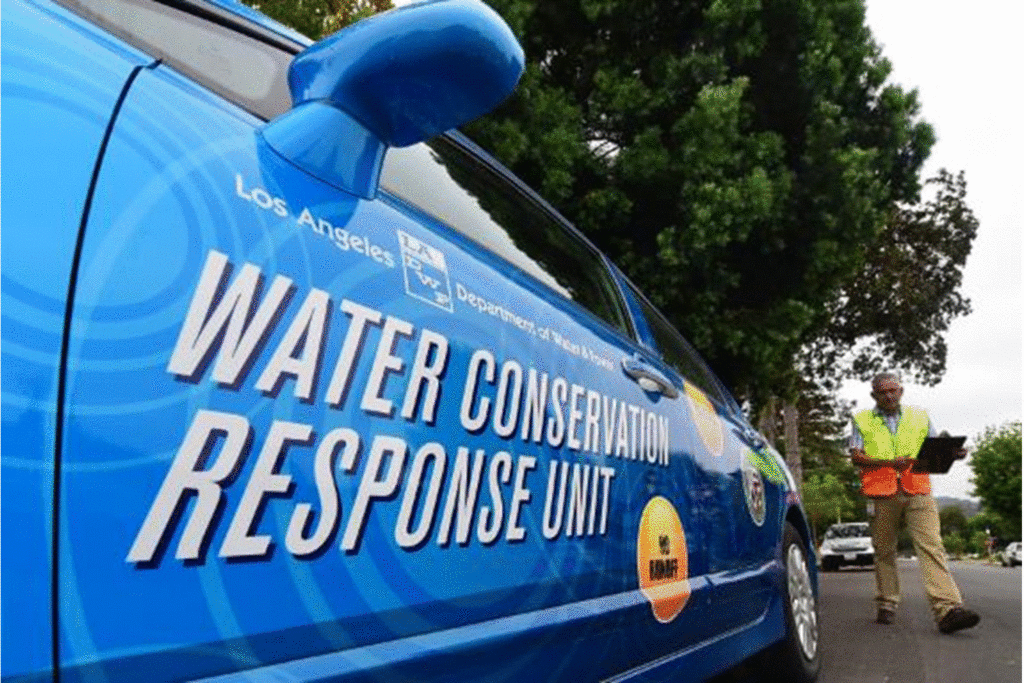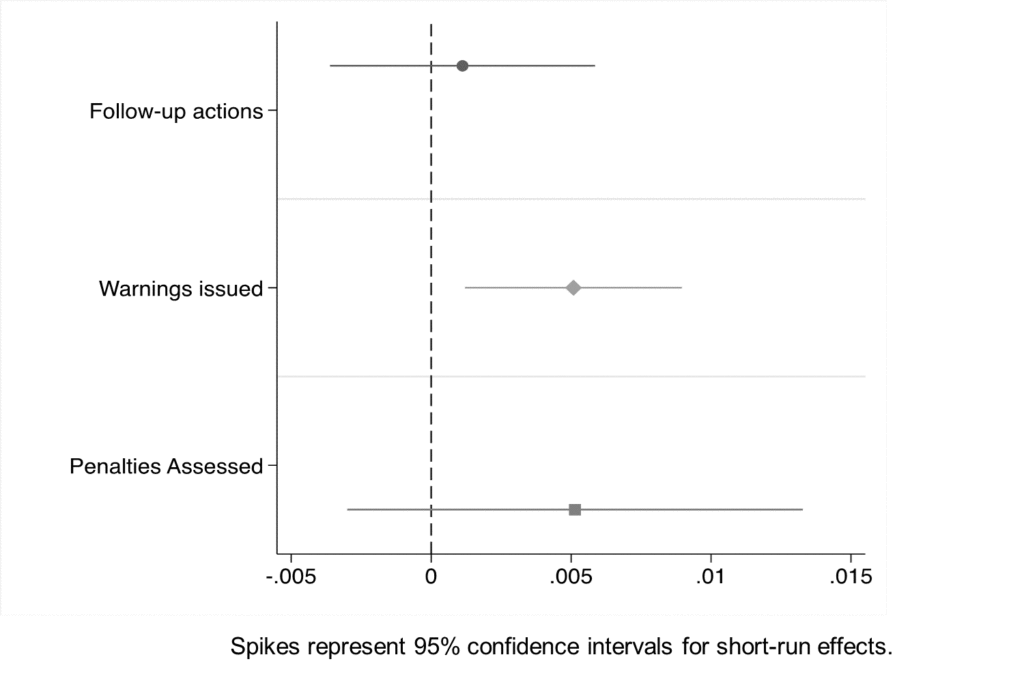Many California communities restricted outdoor irrigation during the recent drought. Did enforcement matter?

Faced with water scarcity, communities sometimes restrict residential outdoor water use, such as car washing and especially lawn/garden irrigation. These water restrictions are effective in driving water conservation, and many California communities adopted them during that state’s recent drought (I’ve blogged about them before). The severity of those restrictions varied considerably, with some utilities allowing unlimited irrigation, some allowing irrigation just one or two days per week, and a few banning outdoor irrigation altogether.
Enforcement of those restrictions was up to individual utilities, and enforcement actions varied considerably. Youlang Zhang and I have been analyzing those enforcement actions and how they correlated with conservation outcomes; we’ll present our first results at the APSA Conference in Boston next week. How did California utilities enforce water restrictions? Did enforcement actions affect water consumption?
Avenues of enforcement
In July 2014 the SWRCB authorized local water utilities to impose fines of up to $500 a day for violating water restrictions and invited citizens to report violations of water use restrictions through online portals and telephone hotlines. After receiving complaints or observing violations, utilities proceeded with a series of escalating enforcement steps. The first is a follow-up action, an informal intervention that typically involves sharing information with the violator with a goal of compliance through education. The second step is a formal warning, where the utility informs the violator of regulations and potential penalties. The final step is a formal penalty and fine.
A different logic underlies each of these enforcement actions Follow-up actions convey information about public policies and community values, with the expectation that greater awareness will motivate conservation. Warnings threaten violators with punishment, and so raise the prospective cost of profligacy. Penalties punish past action in hope of deterring future behavior. Over the course of the drought local utilities issued hundreds of thousands of warnings and levied tens of thousands of penalties for violating water regulations.
Enforcement effects
We analyzed monthly data from California over the 32-month drought emergency period, looking for relationships between utilities’ enforcement actions and total conservation by those utilities. Basically we were asking: does past enforcement predict present conservation?
Initial results are fascinating. Informal follow-up actions and penalties had no statistically discernible relationship with conservation. Only warnings appear to be correlated with conservation. Here are the effects, plotted graphically:

In substantive terms, these results indicate that 100 formal warnings results in about 0.1% greater conservation. Though these figures are small in percentage terms, they represent potentially large volumes of water. An average of 500 more warnings each month during the observation period would have reduced the state’s total water consumption by 29 billion gallons—enough to supply the City of San Francisco for 15 months.
So are penalties pointless?
Does that mean that penalties don’t work? Not necessarily. It’s likely that the positive effects of warnings depend on the threat of penalties. Also, a $500 penalty might be an insufficient incentive for conservation in utilities where penalties were imposed. If you’re a rich celebrity, you might not care about a $500 fine enough to stop wasting water. Without detailed data on individual violations (which we don’t have), it’s hard to say.
In any event, the effects of all enforcement actions were apparently short-lived. Enforcement actions were most influential early in the drought emergency, when climatic conditions were most severe. As the drought weakened, the influence of enforcement also declined. The effects of all three types of enforcement actions appear to be negligible in the long run.
Lessons for conservation
We need to do more work to make sure we have the analysis right and to tease out all of the temporal effects, but our findings to date suggest three preliminary takeaways:
- Formal warnings are most effective in driving overall conservation; and
- Warnings can lead to immediate conservation during an emergency; but
- Enforcement effects decline in the long run, and so probably don’t help promote conservation as a “way of life.”
